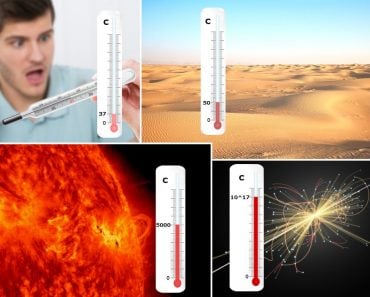If your body and its surroundings are at the same temperature, there is no temperature difference, which prevents heat transfer between these two entities. Your body is, therefore, unable to get rid of the excess heat it produces which is why you feel hot at 37 degrees Celsius (98.6 degrees Fahrenheit).
Everyone says that the ‘optimum’ body temperature is 37 degrees Celsius (98.6 degrees Fahrenheit). But outside, if it is 37 degrees Celsius, most people start to feel hot. In fact, even 32 and 35 degree Celsius is hot. Why does that happen? Shouldn’t the ambient temperature of 37 degrees Celsius feel just right to your body?
Recommended Video for you:
Your Body Produces Heat All The Time!
You can think of your human body one giant chemical machine; a number of biochemical processes occur in the body at any given time. It doesn’t matter whether you are sitting idle, working out, taking a walk, dancing, or reading this article, there are numerous internal processes in your body that never stop.
These biochemical processes in your body, what we call metabolism, produce heat, i.e., they are exothermic processes. Heat is an unavoidable byproduct of the work being done by millions of cells inside your body. And as work continues to happen, your cells produce more heat which will keep raising the temperature above the optimum 37, causing you to overheat. It is, then, critical for the body to shed some of this ‘waste heat’.
Your body has a few ways to keep you cool. It dumps the excess heat out to the surroundings by circulating blood near the surface of the skin. Blood, being largely water, is an excellent store and transporter of heat. Water can absorb large amounts of heat before it changes its temperature. When blood reaches the skin, it releases the heat out into the surrounding.
You also exhale warm and humidified air, and sweat evaporating also cools you down.
This, of course, depends on other factors as well, such as age, gender and how physically active the individual is.

It’s critically important that your body stays at its optimum 37 degrees Celsius (98.6 degrees Fahrenheit) because if it doesn’t, many bodily functions start to break down. The cells and the metabolic reaction that keep you alive occur most efficiently at around 37 degrees. If your internal body temperature gets too high, as with a heatstroke or too low, as with hypothermia, chemicals in the body begin to break apart, spelling disaster for the body.
This is also why your extremities, hands and legs and skin, is cooler than your abdomen.
But Why Does 37 Degrees Celsius (98.6 Fahrenheit) Feel Hot?
Our bodies are most comfortable when the ambient temperature is a balmy 20-21 degrees Celsius (70 degrees Fahrenheit) because at this temperature, there is a stable difference in the temperatures of the body and the surroundings. Once again, note that this range is not the optimum temperature range for everyone; it often varies from one person to another.
Also note that temperature is NOT THE ONLY factor that determines how hot or a cold a person feels. Other factors, like, airflow, humidity level and the cloth you’re wearing (cotton vs nylon) also determine how hot you may feel.
Consequently, heat transfer occurs as heat travels from a region of high energy (our body) to a region of low energy (our surroundings).

However, if both the body and its surroundings are at the same temperature, there is no temperature difference, which prevents heat transfer between these two entities. In fact, we begin to sweat at temperatures lower than 37 degrees celsius.
A study published in 2020 found that our body can overheat even when the temperature is like lower than 35 degrees celsius if the air is humid and we can’t cool off from sweat evaporation. This has some serious implications for our health as rising temperatures due to the climate crisis along with high humidity could make it difficult for us to cool down.
The body is, therefore, unable to get rid of the excess energy it possesses (as a result of metabolic and physical activities), which is why it feels hot when the ambient temperature is 37 degrees Celsius.
Why Is 37 Degrees (98.6 Degrees Fahrenheit) The Optimum Body Temperature?
The idea that “37 degrees Celsius is the optimum body temperature” was originated by Dr. Carl Wunderlich, a 19th-century German physician who analyzed over 25,000 patients and recorded his observations. While many of his observations have stood the test of time and his work has contributed significantly to human understanding of body temperature, his definition of what’s the normal body temperature has been debunked.
- Women tend to have higher body temperatures than men. Also, younger people have higher body temperatures than older people. Thus, it is clear that the ‘optimum’ body temperature varies among individuals. Body temperature depends on each individual’s basal metabolic rate (BMR).
- Normal body temperature varies throughout the course of a day, being at its peak during the day.
- Human beings are generally getting cooler.
Basically, we might actually be heading towards a lower optimum body temperature, but that’s perfectly fine… we’ll get used to it.
For now, here’s your takeaway—the optimum body temperature is not 37 degrees Celsius (98.6 degrees Fahrenheit), but actually closer to 36.4 degrees Celsius (97.5 degrees Fahrenheit)!
But, whatever your individual optimum body temperature, there is evidence that it prevents nasty bacterial and fungal growth. Research shows that the number of fungal species that can thrive (and consequently infect) an animal declines by 6 percent for every 1 degree Celsius (1.8 degree Fahrenheit) rise in temperature.
This is also why you get a fever from an infection, the higher temperatures aid your immune system and make your body uncomfortable for the pathogens to live in.
This is the primary reason why cold-blooded animals like amphibians and reptiles are prone to thousands of fungal species, whereas only a few of them can harm humans and other warm-blooded animals.
Last Updated By: Salama Yusuf
References (click to expand)
- Time to redefine normal body temperature?.
- How the Body Regulates Heat.
- Bergman, A., & Casadevall, A. (2010, December 30). Mammalian Endothermy Optimally Restricts Fungi and Metabolic Costs. (F. Dromer, Ed.), mBio. American Society for Microbiology.
- Raymond, C., Matthews, T., & Horton, R. M. (2020, May 8). The emergence of heat and humidity too severe for human tolerance. Science Advances. American Association for the Advancement of Science (AAAS).













